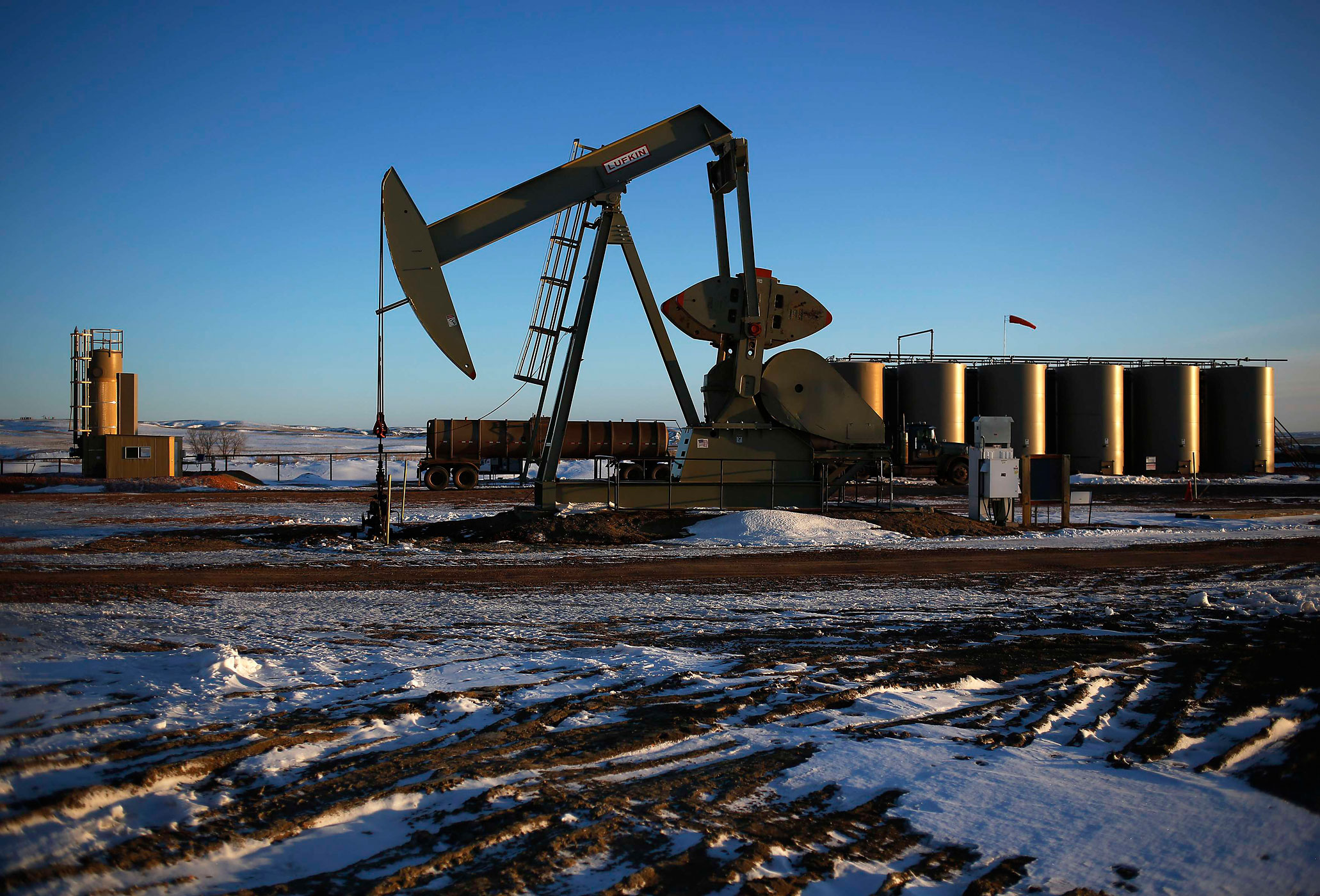
It wasn’t even five years ago that Iran reelected hardliner Mahmoud Ahmadinejad in a disputed presidential election, openly admitted it was building a uranium enrichment facility and brazenly test-fired missiles capable of hitting targets in Israel. Fast-forward to today: A more conciliatory president, Hassan Rouhani, is making historic overtures toward the West and negotiations are showing rare progress toward containing the country’s nuclear program, which has kept the region—and the world—on edge for years.
The difference, according to former Obama administration National Security Advisor Tom Donilon, can be summed up in one word: “fracking.” That’s hydraulic fracturing, the drilling method that’s helped fuel an unprecedented domestic energy boom in the United States.
“There’s a direct line between the U.S.-led sanctions effort to put pressure on Iran” and the flood of oil and gas coming out of the ground at home due to fracking technology, Donilon said Thursday night at an event announcing a new report from the Center for a New American Security, titled “Energy Rush: Shale Production and U.S. National Security.”
Before the North American energy boom—the largest-ever annual increase in domestic oil production took place in 2012—a harsh sanctions regime against Iran looked more like a suicide pact for the oil-import-dependent U.S. Instead, America’s sudden energy abundance dampened the blow of reduced oil exports to the global economy, making truly harsh sanctions on Iran possible.
“The pressure campaign,” Donilon said, “resulted in tremendous pressure in the Iranian economy: a reduction in the ability to sell oil, pressure on their currency, high inflation, high unemployment, the inability to do any real financing within the marketplace. And that led directly, I think, to the election of Rouhani last spring. And that led directly to the fact that we’re at the table now talking about the nuclear program.”
America’s improved bargaining position vis-à-vis Iran is just one example of how the 21st century geopolitical order has been upended by the energy revolution underway in the U.S., according to Elizabeth Rosenberg, who authored the report. The downward pressure on oil prices created by plentiful crude in North America gives the U.S. leverage it didn’t previously have in dealings with all major petroleum exporting states, including some that have been particularly irksome to the U.S. of late, like Venezuela and Russia.
Because the price of oil is set globally, the U.S. energy revolution has an immediate impact on the prices in the oil market. Natural gas prices, on the other hand, tend to vary from region to region—since transporting a gas is a lot harder than moving an oil tanker—and natural gas produced in America has had less of a global impact. Exports of liquified natural gas, which can be transported with relative ease, could change that. While natural gas prices in the U.S. are hovering at historic lows—keeping energy prices down and boosting to the American manufacturing sector—prices in Europe are three times higher and consumers in Asia pay even more. Exports of liquefied natural gas from the U.S. would, many believe, bring prices closer together around the world, while giving America’s European allies relief from their dependence on natural gas exports from Russia—a pressure point Moscow has shown itself more than willing to use in the past.
The CNAS report calls for the Obama administration to approve more permits for companies to export liquefied natural gas; only a handful have been approved thus far while dozens remain pending. But, as with all implications of the U.S. fossil fuel boom, the full impact of approving those export applications is harder to predict. Ramping up gas exports could send energy prices in the U.S. climbing, cutting into the competitive advantage cheap energy gives the domestic manufacturing sector. On the other hand, higher energy prices would give a much-needed boost to lower-carbon energy sources, like nuclear, wind and solar power, which could help the U.S. bring down its sizeable carbon footprint over the long term, something it will have to do for the world to avoid the most devastating impacts of climate change. And the environmental impact of fracking is still a subject of much dispute. A belated EPA study into the impact of fracking on groundwater is due late this year.
It’s difficult to predict what will happen next. In the five years since Barack Obama was elected, U.S. oil imports have fallen by 44 percent and imports of natural gas have plummeted by 58 percent. As Rosenberg notes in her report, facilities once built to receive liquefied natural gas imports are being converted into export facilities, and next year the U.S. is projected to overtake Saudi Arabia as the biggest producer of oil on earth. No one would have called that 10 years ago, and no one can say for sure what the future has in store.
More Must-Reads from TIME
- Cybersecurity Experts Are Sounding the Alarm on DOGE
- Meet the 2025 Women of the Year
- The Harsh Truth About Disability Inclusion
- Why Do More Young Adults Have Cancer?
- Colman Domingo Leads With Radical Love
- How to Get Better at Doing Things Alone
- Michelle Zauner Stares Down the Darkness
Contact us at letters@time.com